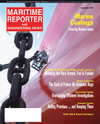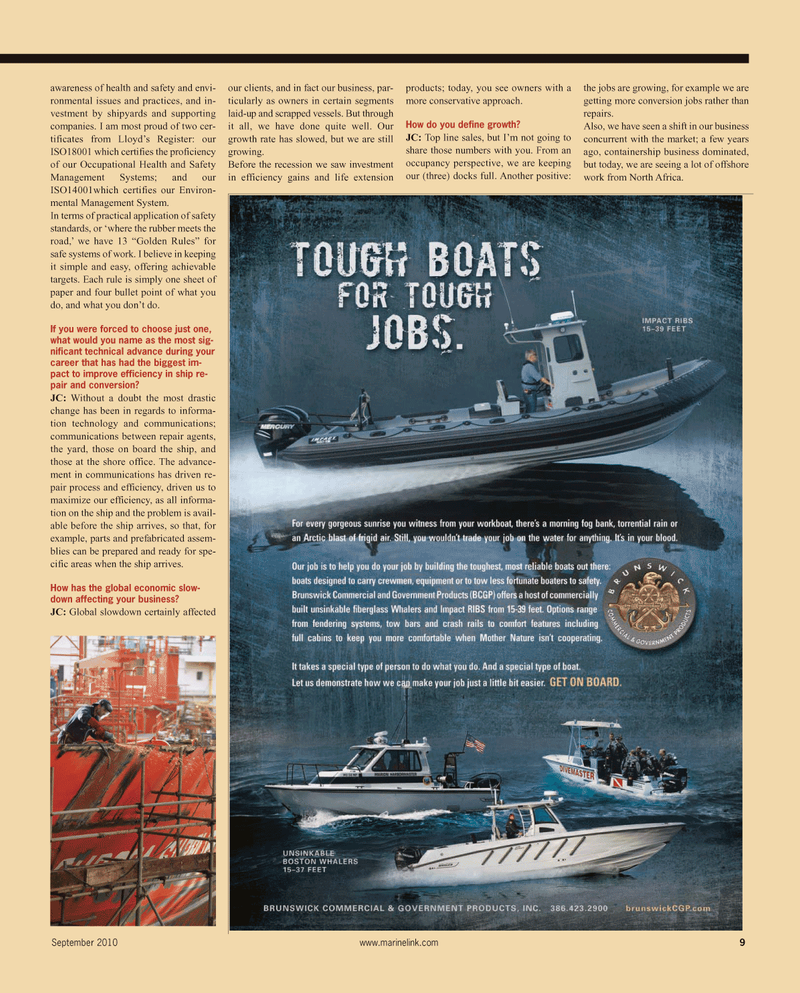
Page 9: of Maritime Reporter Magazine (September 2010)
Marine Propulsion Edition
Read this page in Pdf, Flash or Html5 edition of September 2010 Maritime Reporter Magazine
awareness of health and safety and envi- ronmental issues and practices, and in- vestment by shipyards and supporting companies. I am most proud of two cer- tificates from Lloyd’s Register: our
ISO18001 which certifies the proficiency of our Occupational Health and Safety
Management Systems; and our
ISO14001which certifies our Environ- mental Management System.
In terms of practical application of safety standards, or ‘where the rubber meets the road,’ we have 13 “Golden Rules” for safe systems of work. I believe in keeping it simple and easy, offering achievable targets. Each rule is simply one sheet of paper and four bullet point of what you do, and what you don’t do.
If you were forced to choose just one, what would you name as the most sig- nificant technical advance during your career that has had the biggest im- pact to improve efficiency in ship re- pair and conversion?
JC: Without a doubt the most drastic change has been in regards to informa- tion technology and communications; communications between repair agents, the yard, those on board the ship, and those at the shore office. The advance- ment in communications has driven re- pair process and efficiency, driven us to maximize our efficiency, as all informa- tion on the ship and the problem is avail- able before the ship arrives, so that, for example, parts and prefabricated assem- blies can be prepared and ready for spe- cific areas when the ship arrives.
How has the global economic slow- down affecting your business?
JC: Global slowdown certainly affected our clients, and in fact our business, par- ticularly as owners in certain segments laid-up and scrapped vessels. But through it all, we have done quite well. Our growth rate has slowed, but we are still growing.
Before the recession we saw investment in efficiency gains and life extension products; today, you see owners with a more conservative approach.
How do you define growth?
JC: Top line sales, but I’m not going to share those numbers with you. From an occupancy perspective, we are keeping our (three) docks full. Another positive: the jobs are growing, for example we are getting more conversion jobs rather than repairs.
Also, we have seen a shift in our business concurrent with the market; a few years ago, containership business dominated, but today, we are seeing a lot of offshore work from North Africa.
September 2010 www.marinelink.com 9

 8
8

 10
10
